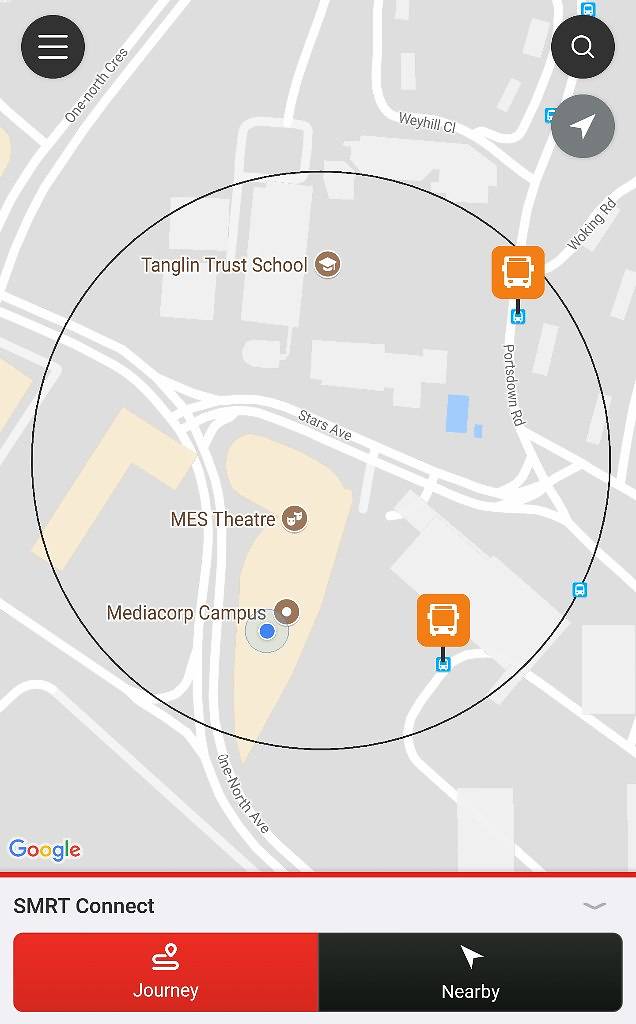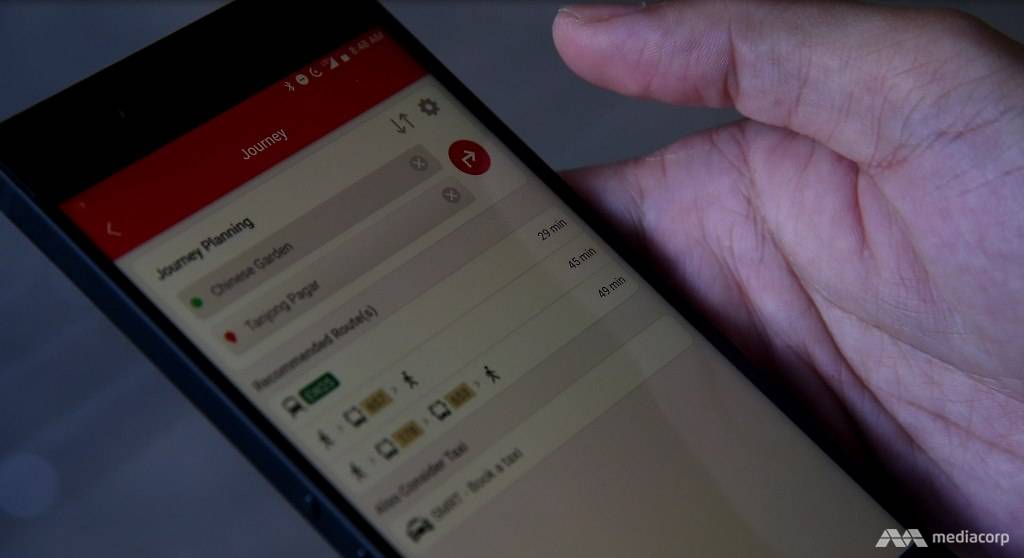SINGAPORE: It’s about 8.30am on the first day of February, with the sun in full blaze a day after having its spotlight usurped by the super blue blood moon.
The crowds are fast streaming in at Chinese Garden MRT station, walking briskly from the neighbouring residential estates or unloaded, en masse, from a continual stream of buses at the front of the station.
I was testing SMRT’s enhanced SMRTConnect mobile app this morning, which it announced last November.
Then, it said the app will be rolled out in three phases starting in December and some of the features include allowing commuters to see train arrival timings updated in real time to include the recovery time while rail engineers fix faults. Users will also be able to see how many trains they may have to wait for before being able to board.
Firing it up, the SMRTConnect app looked like any other map app, with nearby bus stops and train stations prominently highlighted using enlarged icons.

Tapping on them would reveal information such as the buses that stop at the particular bus stop and arrival timing, as well as train arrival timings in the various directions.
Under the Bus section of the app, users can search by the bus number or the bus stop they are at. Arrival timings for the buses are also supplemented with colour-coded details like if there are seats available (in green) or if standing room is available (in yellow) or there is limited standing (in red).

For the MRT section, the map of the entire rail system in Singapore can be seen. But it’s not just a static map. Tapping on a specific train station will bring arrival timings of the next two trains and, if the selected is an interchange station, timings for trains on the various lines will also be shown.
But back to my journey, and I was travelling to Tanjong Pagar for an appointment this morning. Using the journey planner, it allows passengers to find out how long the journey would be via a train or bus.
A few taps later, I found out that my train journey on the East-West Line would take 29 minutes. The time was 8.48am.

The journey planner helps list out the various travel options for commuters. (Photo: Gaya Chandramohan)
Just missing the train waiting at the platform as I went up the escalator, I saw that the next one would arrive in 2 minutes. “Not so bad,” I thought, even as I wondered how missing the earlier train would affect my arrival time.
Even though it was still the morning peak period, the platform heading towards Jurong East and town was relatively light in human traffic. As I hopped on into the train, I knew the sanctity of one’s personal space would soon be under threat.
True enough, the crowds rolled in at Jurong East – the main interchange station in the West – and one’s breathing room became immediately more conspicuous by its absence. But given that the train had several standing-only cabins mixed in, there were still pockets of space to move about.
The journey from then was uneventful, even clockwork.
So, at 9.17am – 29 minutes as predicted – I stepped out of the train and walked towards the turnstile to exit the station.
Perhaps it’s still early days, coupled with the fact that my journey was without incident, that makes me think the enhanced SMRTConnect app is a step in the right direction. It is also just a test app, so certain functionalities such as app notifications were not seen in action.
Taken in that context, I would think sterner tests await, particularly when it’s rolled out to the mass public and more download and use the app. How reliable will the app be then? Will it crash more often than it works?
And should there be a delay or disruption, will the app provide suggestions such as alternative routes based on one’s travel patterns or preferences?
All in all, the experience with the SMRTConnect mobile app raises more questions than answers and leads me, inevitably, to a cliche: Only time will tell.




